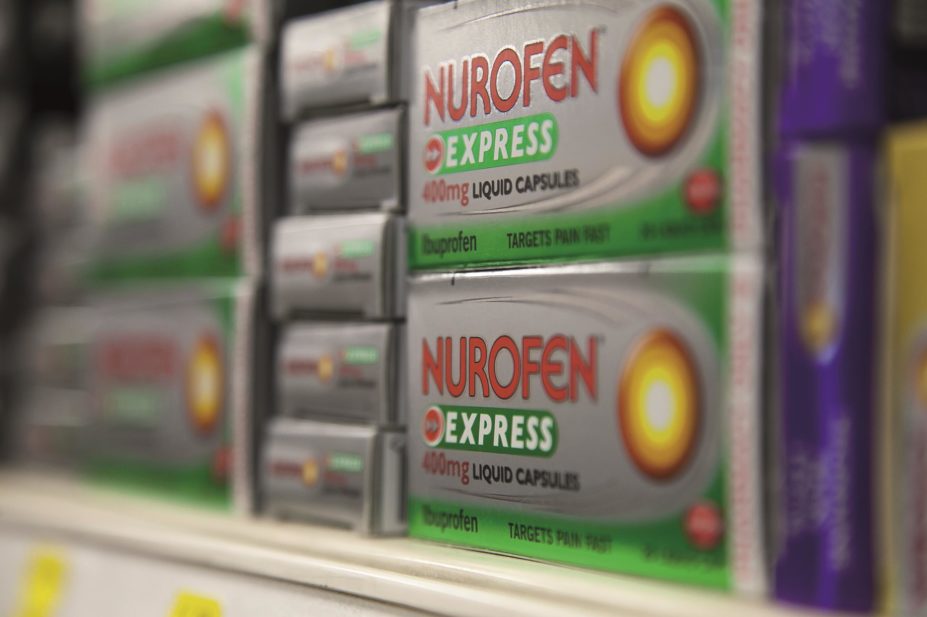
Newzulu / Alamy Stock Photo
The advertising watchdog has banned a TV advertisement for one of the UK’s biggest painkiller brands, Nurofen, because it falsely claims that the product could specifically target joint and back pain.
The Advertising Standards Authority (ASA) received 18 complaints after the TV advertisement for ‘Nurofen Joint and Back’ which aired in April 2016, raising concerns that it misleadingly implied that the product specifically targeted joint and back pain.
The advertisement shows a woman with back pain who subsequently takes Nurofen Joint and Back. As she takes the product, an anatomical image shows the medicine moving down her body to her back while on-screen text states: “Also indicated for other aches and pains.”
The advertisement then shows the woman going about her usual activities without any pain, interspersed with anatomical images of her back with a Nurofen symbol indicating where the pain relief is acting. The voiceover claims: “Just a single dose of Nurofen Joint and Back provides you with constant targeted pain relief for up to eight hours.”
In its response to the ASA, RB UK Commercial Ltd, which owns Nurofen, states that Nurofen Joint and Back contained liquid ibuprofen, which is more readily absorbed than ‘standard’ Nurofen, and that ibuprofen alleviates pain by inhibiting the production of the chemical messengers that produces pain messages at the site of injury. This mode of action means that ibuprofen targets pain regardless of where it occurs in the body, the company argues.
RB UK Commercial Ltd adds that the advertisement shows an example of the pain which Nurofen Joint and Back could be used to treat, but does not imply that it specifically or only targets back pain.
However, ASA considers that, in the context of an advertisement focusing on the alleviation of back pain, and given the product’s name – Nurofen Joint and Back – viewers would be likely to understand that it is specifically designed to relieve back and joint pain.
Viewers are also likely to infer from the advertisement that the product has a special mechanism or contains an active ingredient which makes it especially effective for back and joint pain in comparison to other painkillers, the watchdog says.
“Because the ad implied the product had a special mechanism which meant it specifically targeted back and joint pain, and was especially effective at relieving those sources of pain, when that was not the case, we concluded that it was misleading,” the ASA says.
RB UK Commercial Ltd says in a statement that it is disappointed with the ASA’s decision. “Nurofen pain-specific products were introduced to provide easy navigation of pain-relief options for consumers experiencing a specific type of pain, particularly within the grocery environment where pharmacy support isn’t available,” the statement says.
“Research has shown that 9 in 10 people search for products to treat specific symptoms, such as joint and back pain, and 7 in 10 say pain-specific packs help them decide which product is best for their needs.
“All TV advertising claims made in the UK are supported by robust evidence and approved by the relevant independent external agencies. Our TV adverts go through this normal process and receive full sign-off by the agencies before broadcast,” the company adds.
John Smith, chief executive of the Proprietary Association of Great Britain, the over-the-counter medicines industry association, comments: “[We] believe that this is an isolated case, but have been working closely with our member companies and regulatory bodies to ensure manufacturers adhere to specific advertising guidance in order to maintain the high standards of promotion across the UK self-care industry.”
He adds: “In the UK, some pain relief products are marketed to target specific types of pain. This is because research shows this can help people to search the shelf and choose a suitable product more easily, particularly when a pharmacist is not present.”


